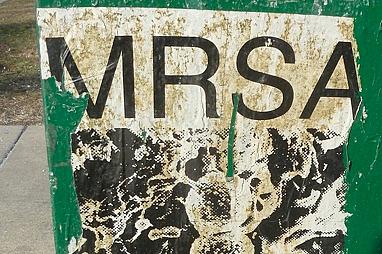Herd Immunity: Mount Sinai Medical Center Did a Public Service by Revealing MRSA Cases

What if a team of researchers in a lab coats came to your house and said they wanted to examine your kids for head lice for research they intended to publish – with the name of your family – for the purpose of advancing awareness and understanding of head lice?
I can already hear the door slamming shut.
Now consider that Mount Sinai Medical Center in New York was asked to subject itself to a study of something far more serious – with more serious public relations implications – than head lice. Researchers from The Rockefeller University, Weill Cornell School of Medicine, and the Mount Sinai School of Medicine wanted to study the risk of death from Methicillin-resistant Staphylococcus aureus (MRSA). And they wanted to look at hundreds of patient records over a six-year period.
Mount Sinai kept the door open.
And we’re all fortunate that they did, because the researchers – who published their study in Emerging Infectious Diseases – made some fascinating and important findings that provide new windows into how to track and treat the infections. Here are just three of the most interesting.
MRSA cases are generally moving upward, but fluctuating greatly.Stories in recent years have indicated that MRSA is on a rocketship rise and threatening us all. Others have indicated that it has peaked and is being overshadowed by other infections. At Mount Sinai, at least, the trend is wobbly but up. The authors write:
Each year during 2002–2006, the annual number of hospital admissions in this study were 117, 77, 147, 121, and 161, respectively; through May 31, 2007, another 76 patients were hospitalized (equivalent to 184 annual hospitalizations).
Hospitals and health care are the main MRSA sources. Everyone who writes about MRSA writes that the cases are most commonly found in hospitals or caused by some interaction with health care. Here, the researchers put hard numbers to that assumption. The authors write:
Recent medical care seemed to be associated with type of strain. Nearly 40% of infections were health care–community associated, almost all the rest were hospital associated. Average length of stay for patients with all infection types was 32.9 days. Many cases of MRSA bacteremia were in patients with renal insufficiency and/or cardiovascular disease; >40% had recently had a surgical procedure. Many (43%) cases of bacteremia were secondary to central venous catheter infections. The 90-day all-cause mortality rate was 31.5% for the 603 patients; rate was 27.2% when all 699 episodes of bacteremia were considered.
A table in the paper gives a detailed breakdown of the patient characteristics.
Some health conditions make MRSA worse, and others make it a little better.If you had to guess, would you say that diabetes, a condition that can often lead to skin problems and loss of limbs, would make people more susceptible to MRSA? Think again. The authors write:
Our findings can help clinicians estimate the risk that a patient with MRSA bacteremia will die. For example, an elderly patient with liver cirrhosis and MRSA bacteremia who lived in a nursing home before hospital admission would have an extremely poor prognosis. Conversely, an otherwise healthy patient with diabetes mellitus might have a better prognosis that could be improved even more by consultation with an infectious disease specialist. We note paradoxically that several of the positive predictive factors (such as diabetes and vascular graft infections) represent situations in which host barriers to infections might be impaired.
I’ve added Mount Sinai to the Herd Immunity map. If you have suggestions for hospitals that have documented healthcare-associated infections or that are making progress in the fight against them, share them in the comments below or send me a note at askantidote@gmail.com or via Twitter @wheisel.
Related Posts:
Herd Immunity: Let's Put Innovators in Fighting MRSA and Healthcare-Associated Infections on the Map
Herd Immunity: Mapping MRSA and Other Superbugs, One Case at a Time

